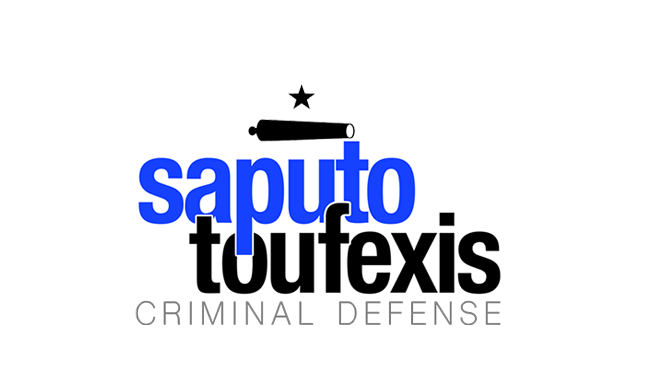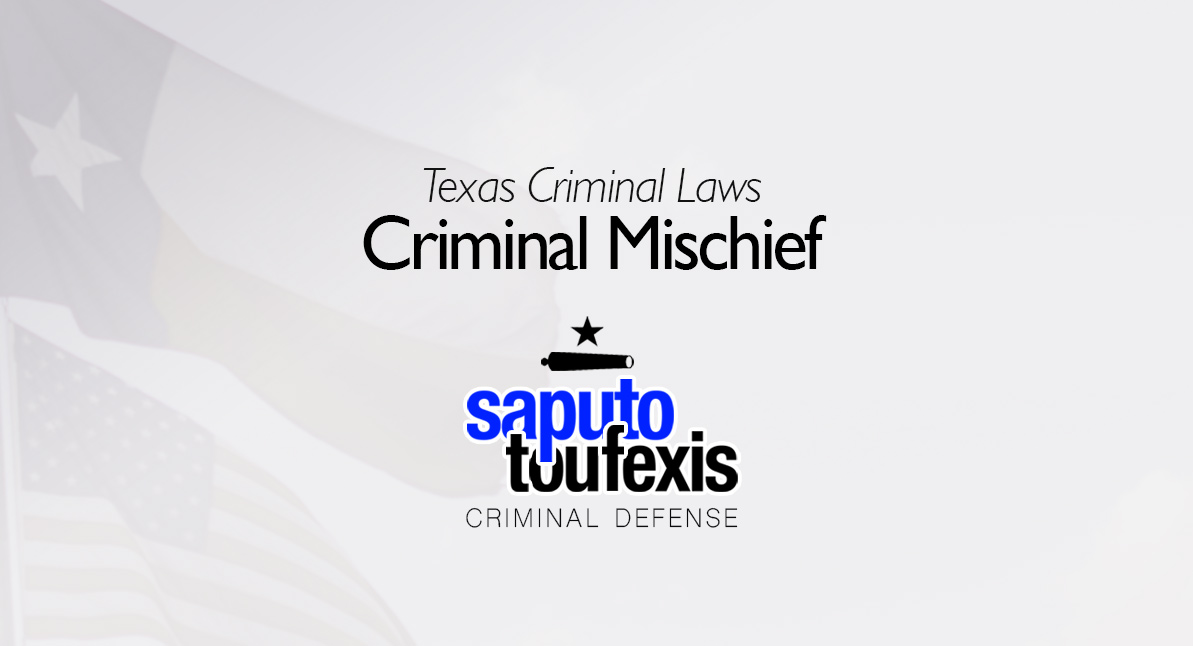The Texas Criminal Mischief law gives police the right to arrest you if they believe you damaged, destroyed, or tampered with someone else’s property. The law also makes it illegal to make “markings” on someone else’s property.
FAQs about the
Criminal Mischief law in Texas
- What is the current Texas law about Criminal Mischief?
- I didn’t intend to damage the property, am I still in trouble?
- What does tangible property mean?
- If multiple pieces of property were tampered with or damaged, is that one offense or multiple offenses?
- What does it mean to tamper with something?
- What is the statute of limitation for Criminal Mischief in Texas?
- What is the penalty for a Texas Criminal Mischief offense?
- Can you get probation for Criminal Mischief in Texas?
- What level of crime is Criminal Mischief in Texas?
The legislature has amended the penalty scheme for the Criminal Mischief law several times since 2015. Most recently, in 2023, the legislature created a state jail felony enhancement for catalytic converter theft and a third degree felony theft enhancement for Criminal Mischief cases resulting in impairment to the public power supply.
Have you been charged with Criminal Mischief? Contact us today to discuss legal representation.
or Text or Call (888) 239-9305
The law also applies to “skimming” from a utility, such as diverting a cable line to your home, bypassing a water meter, or diverting water away from an irrigation ditch for your own use.
The legislature codified this criminal offense in Texas Penal Code Section 28.03.
The Penal Code classifies the Texas Criminal Mischief law under Title 7 “Offenses Against Property,” Chapter 28 “Arson, Criminal Mischief, and Other Property Damage or Destruction.” Crimes under this chapter cover a wide range of offenses that focus on actions taken against property belong to other people. These offenses include both destructive actions and aesthetic changes. Learn more about the Texas offense of Criminal Mischief below.
What is the current Texas law about Criminal Mischief?
Texas law currently defines the offense of Criminal Mischief in Penal Code Section §28.03 as follows:[1]
(a) A person commits an offense if, without the effective consent of the owner:
(1) he intentionally or knowingly damages or destroys the tangible property of the owner;
(2) he intentionally or knowingly tampers with the tangible property of the owner and causes pecuniary loss or substantial inconvenience to the owner or a third person; or
(3) he intentionally or knowingly makes markings, including inscriptions, slogans, drawings, or paintings, on the tangible property of the owner.
Accordingly, subsection (a)(1) covers situations when people damage property. Subsection (a)(2) covers situations involving a loss in value to property or a substantial inconvenience to the owner in using the property, even if not damaged.
Subsection (a)(3) covers situations like graffiti, where someone leaves “markings” on property – even if the property is not damaged and there is no loss in value. The legislature passed another law that specifically criminalizes graffiti, and this law covers much of the same ground.
I didn’t intend to damage the property, am I still in trouble?
According to the Texas Penal Code, the specific requirement for this crime is knowingly or intentionally. That means if you either were aware of the consequences of your actions, or it was your specific goal to cause the damage, then you acted with knowledge or intent. If you had no knowledge of what you were doing or had no intention of doing the damage/tampering with the property (for example if you were pushed and fell through a wooden fence or tripped over a can of paint causing it to spill onto someones porch), then you do not meet that requirement. Proving what you knew or intended can be critical to the overall success of your case.
What does tangible property mean?
Tangible property means anything that you can physically touch or interact with. For example, a sign is a physical object, and would be considered tangible property. The words on the sign, specifically the ideas behind them, are not physical. If you were to post your own sign with the same words, but with a giant X through them, you’re not tampering with the physical nature of the property, just the idea behind it. Ideas, thoughts, or slogans are not physical objects and are not covered under this statute.
If multiple pieces of property were tampered with or damaged, is that one offense or multiple offenses?
To “tamper” with something can be a very broad definition. At its simplest definition, it means to alter something. This can either be by adding something (like spraying paint onto a wall), taking something away (for example, pulling out a fence post from a farm pen), or changing something without taking away or adding to it (for example, breaking a water meter).
Common examples of tampering might include “getting free cable” by running an unauthorized cord to a cable box, or cutting a hole through a fence, or even posting a political poster on a wall without permission. The range of situations that might fall under this definition can be far ranging, and if you’re unsure whether or not your actions qualify, it’s important that you speak with an attorney who can counsel you.
What does it mean to tamper with something?
Under Texas law, if multiple pieces of property were damaged or tampered with in a continuous method (the law calls this a continuing course of conduct), each piece of property damage or cost can be added together. That means that if three pieces of property were damaged separately but by the same person or people with the same goal or general patter of activity, the cost can be added together for the purpose of determining the punishment level. So if three pieces of property were each damaged for $600, instead of three charges at Class A Misdemeanors, it could be one charge as a State Felony at $1,800.
What is the statute of limitation for Criminal Mischief in Texas?
Misdemeanor level Criminal Mischief charges have a two-year limitations period.[2] Felony level offenses have a three-year limitations period.[3]
What is the penalty for a Texas Criminal Mischief offense?
The punishment for Criminal Mischief ranges from as low as a Class C Misdemeanor all the way up to a First Degree Felony.[4] The penalty scheme has been updated by the legislature in seven bills since 2015.
Currently, as of the 88th Legislature, Criminal Mischief is generally punished as a misdemeanor when damage is less than $2,500. When damage exceeds $2,500, the offense falls in the felony range.
However, there are some specific circumstances that make a low-damage act a felony. For example, even if the cost of damage is less than $2,500, the offense is punished as a state jail felony “if the property damaged or destroyed is a habitation and if the damage or destruction is caused by a firearm or explosive weapon.”[5] In addition, offenses that cause little damage can still be a felony if the affected property is a place of worship or a fence that pens in livestock animals, or if an explosive device or firearm is used to damage the property, or if they meet one of the other enhancement criteria. Learn more information about some of these enhancements below.
What changed in 2017?
The legislature added some enhancements to the Criminal Mischief law in 2017 during the 85th Legislature. Effective September 1, 2017, Criminal Mischief convictions are classified at the state jail felony level when the property damaged is a “property used for flood control purposes or a dam.”[6] The legislature also created a third degree felony enhancement for using a weapon to “cause the death of one or more head of cattle or bison or one or more horses.”[7] However, the law provides an exception for you if you kill the livestock in the course of your military or agricultural duties.
What changed in 2021?
The legislature created a third degree felony enhancement for situations where an ATM was impaired, regardless of the amount of the pecuniary loss.[8]
What changed in 2023?
In 2023, the legislature passed the “Deputy Darren Almendarez Act,” which created a state jail felony enhancement for offenses resulting in damage to vehicles during the removal or attempted removal of a catalytic converter, even if the damage was less than $30,000.[9] The 88th Legislature also created a third degree felony enhancement for the Criminal Mischief law when the act caused any impairment or interruption of property used for public power supply or caused any public power supply to be diverted in any manner.[10]
Effective February 4, 2024, any violation of this offense punishable as a misdemeanor or state jail felony can be enhanced to a third degree felony if the state can prove you committed the offense in the course of committing a Smuggling of Persons offense. [11]
Can you get probation for Criminal Mischief in Texas?
The Texas Code of Criminal Procedure allows both judges and juries to grant probation for Criminal Mischief, and judges are also allowed to accept deferred adjudication plea deals.[12]
Note, however, that no matter the offense, neither judges nor juries may recommend community supervision for any suspended sentence of over 10 years.[13] Also, judges may not grant community supervision after a conviction if (1) the defendant used or exhibited a deadly weapon during the commission of the felony or immediate flight thereafter and (2) the defendant used or exhibited the deadly weapon himself or was a party to the offense and knew that a deadly weapon would be used or exhibited.[14]
What level of crime is Criminal Mischief in Texas?
The punishment for Criminal Mischief ranges from a Class C misdemeanor to a first degree felony, depending on the value of the property damaged.
Learn more about the penalty range for this offense in the section above.
Legal References:
^1. Texas Penal Code §28.03. This law is current as of 2024.^2. Code of Criminal Procedure 12.02(a)^3. See Code of Criminal Procedure 12.01(9)^4. See Texas Penal Code §28.03(b)^5. §28.03(b)(3)(B), Texas Penal Code^6. Texas Penal Code §28.03(b)(4)(D)(i), as enacted by House Bill 1257, 85th Texas Legislature, Section 1, effective September 1, 2017^7. Texas Penal Code §28.03(b)(5)(B) & §28.03(k), as enacted by House Bill 2817, 85th Texas Legislature, Section 2, effective September 1, 2017^8. SB 516, 87th Texas Legislature (RS), Section 1, effective September 1, 2021^9. SB 224, 88th Texas Legislature (RS), Section 2.01, effective September 1, 2023^10. HB 1833, 88th Texas Legislature (RS), Section 1, effective September 1, 2023^11. Texas Penal Code §28.10, as enacted by SB 4, 88th Texas Legislature (SS3), Section 7^12 See Chapter 42, Texas Code of Criminal Procedure, Art. 42A.054, Art. 42A.056, Art. 42A.102^13. Art. 42A.053(c), Texas Code of Criminal Procedure^14. Art. 42A.054(b), Texas Code of Criminal Procedure










